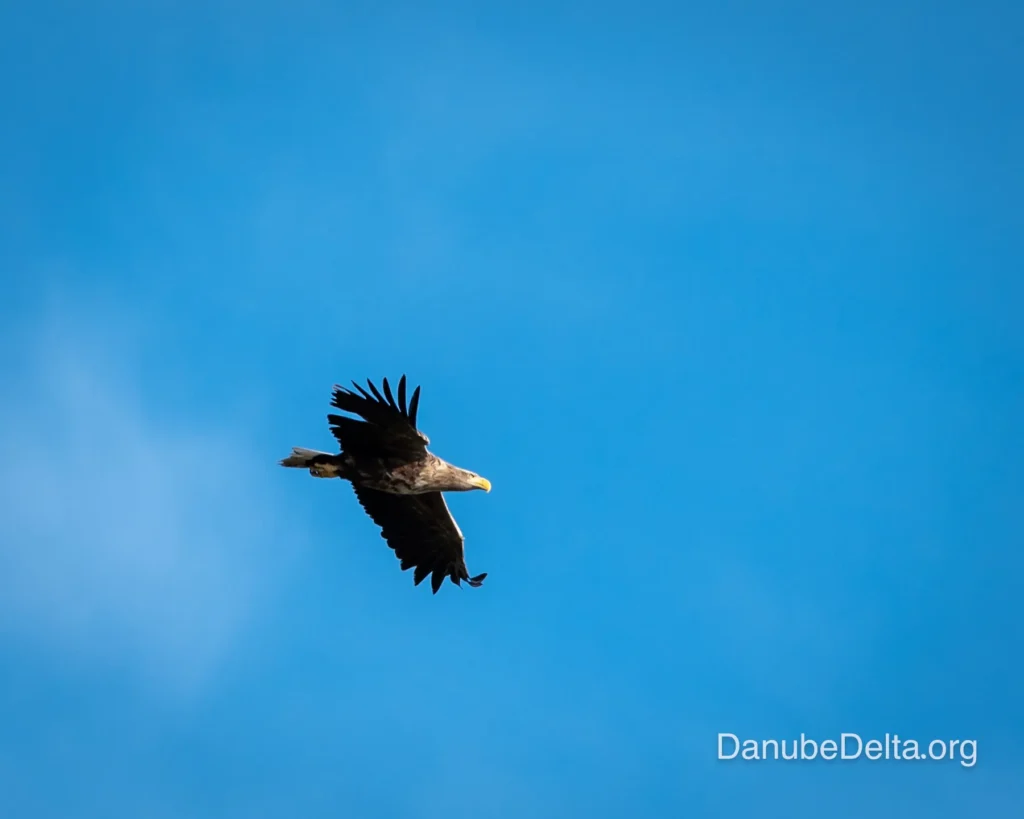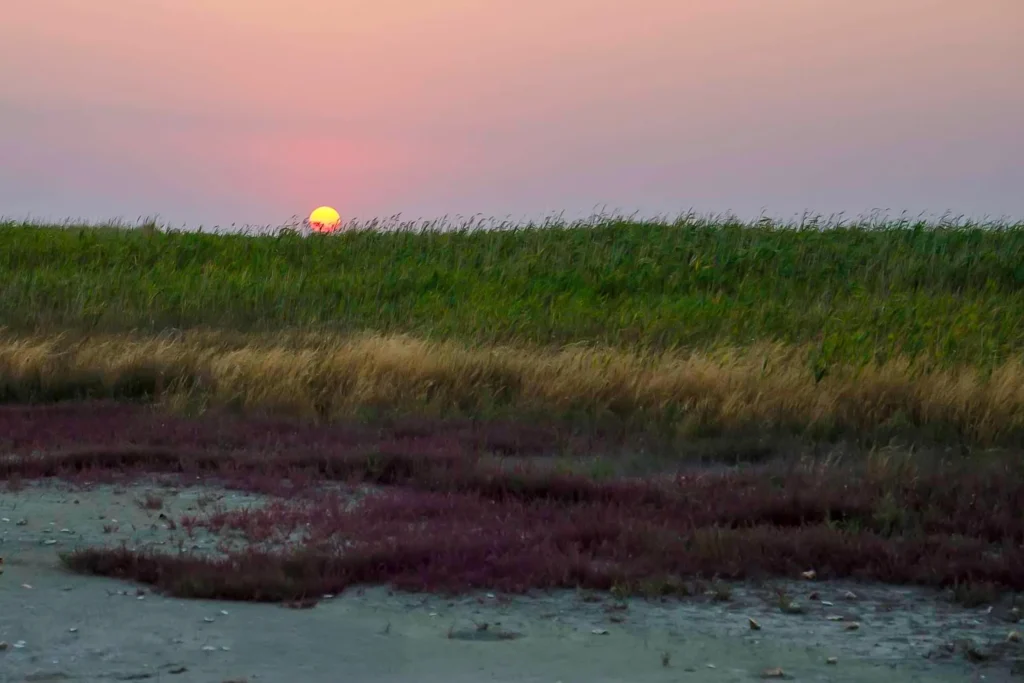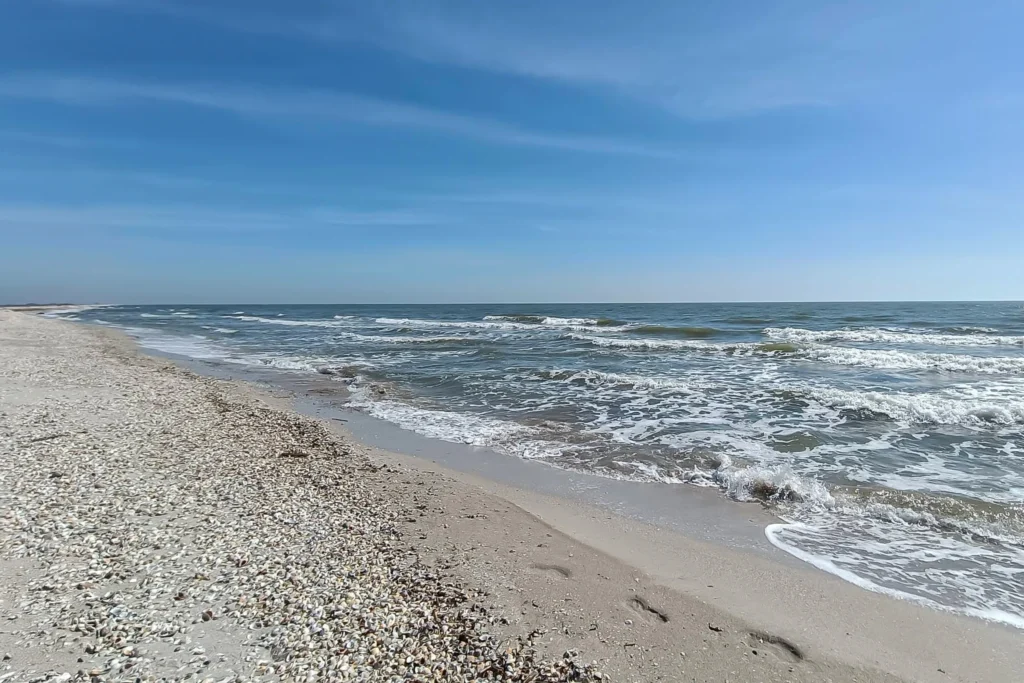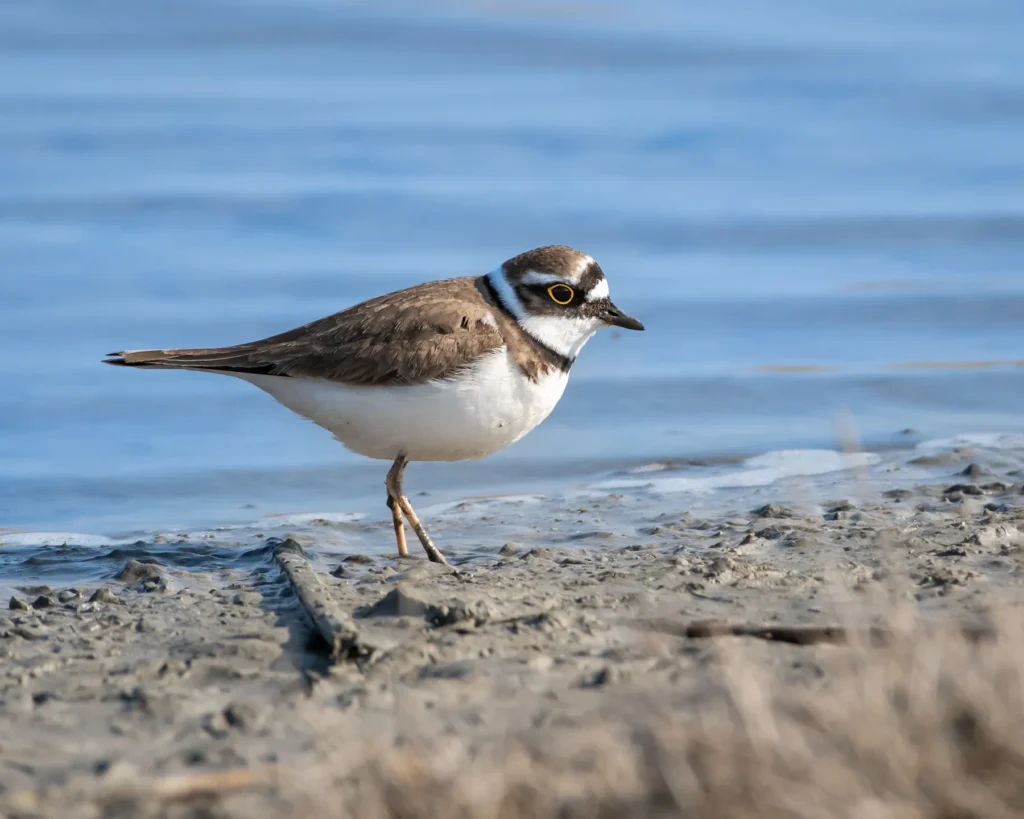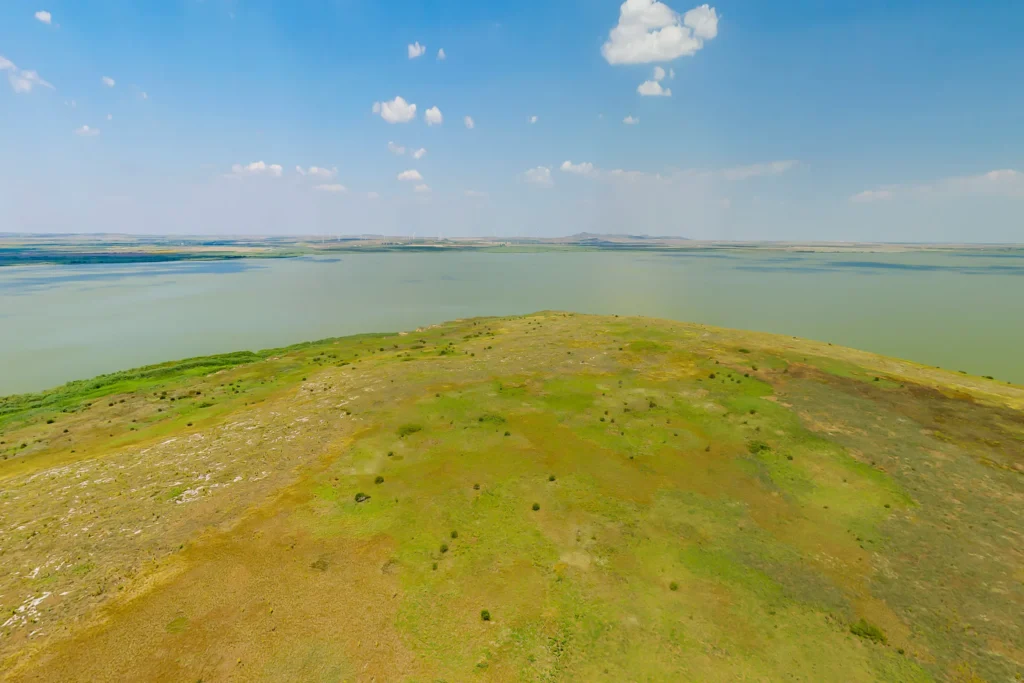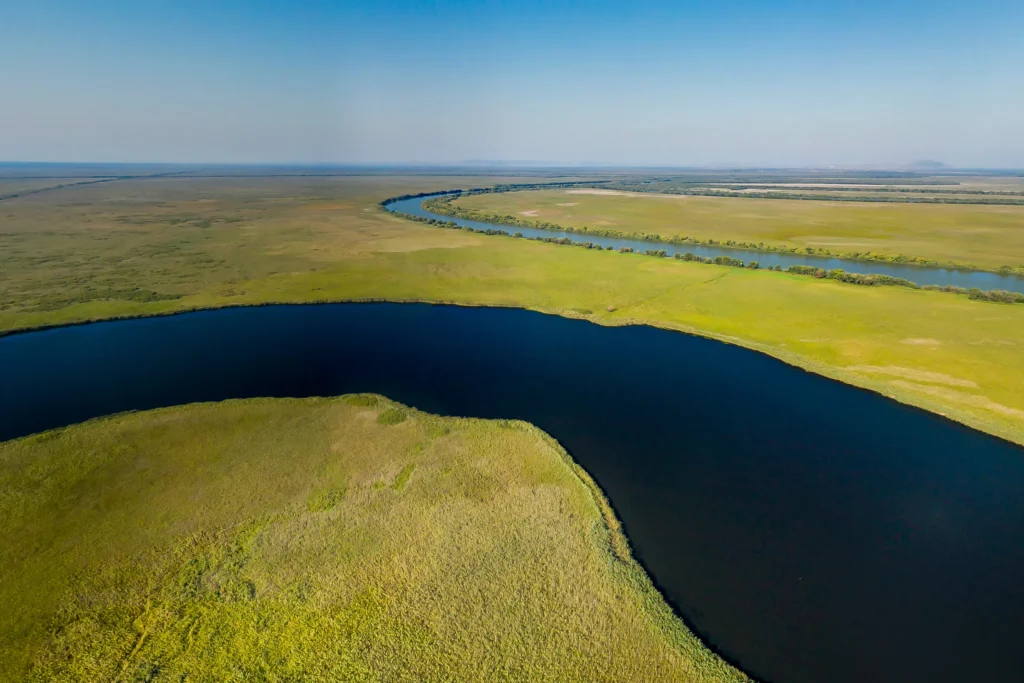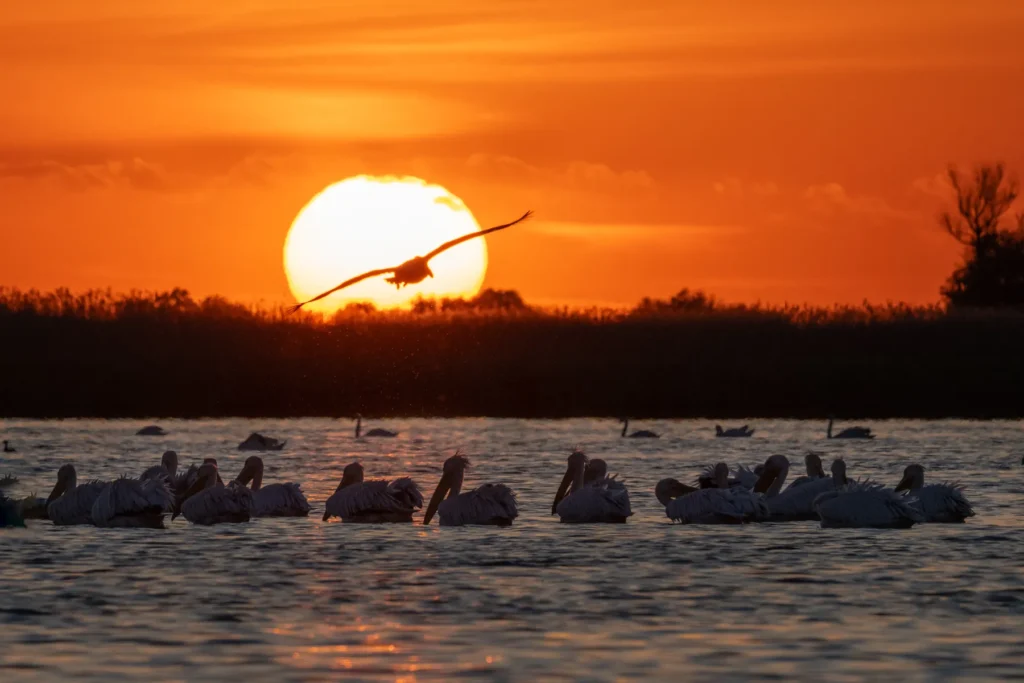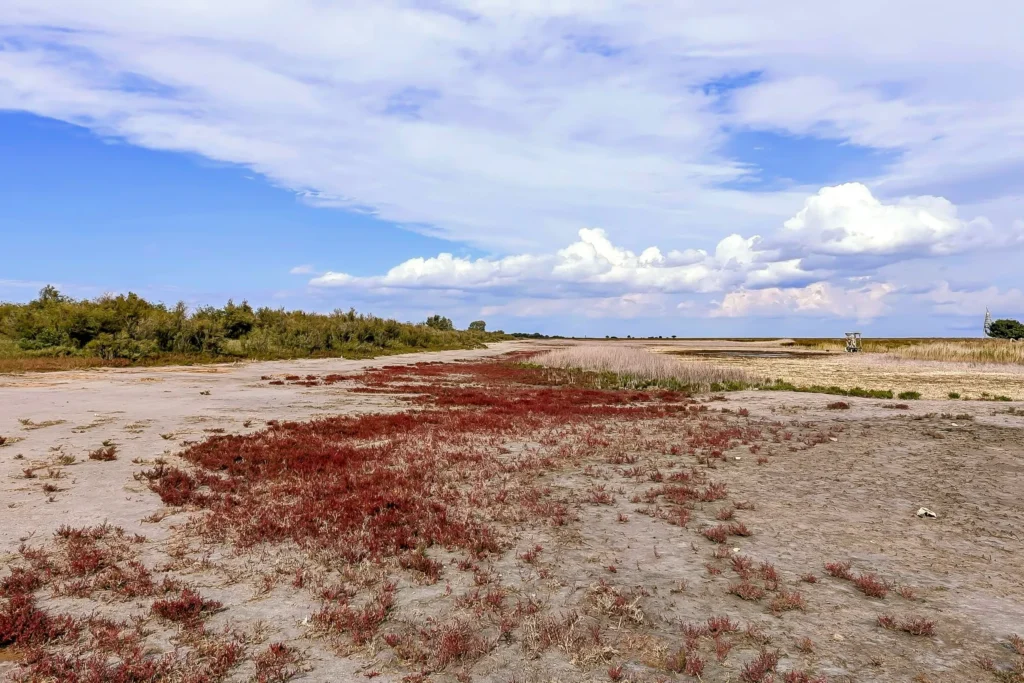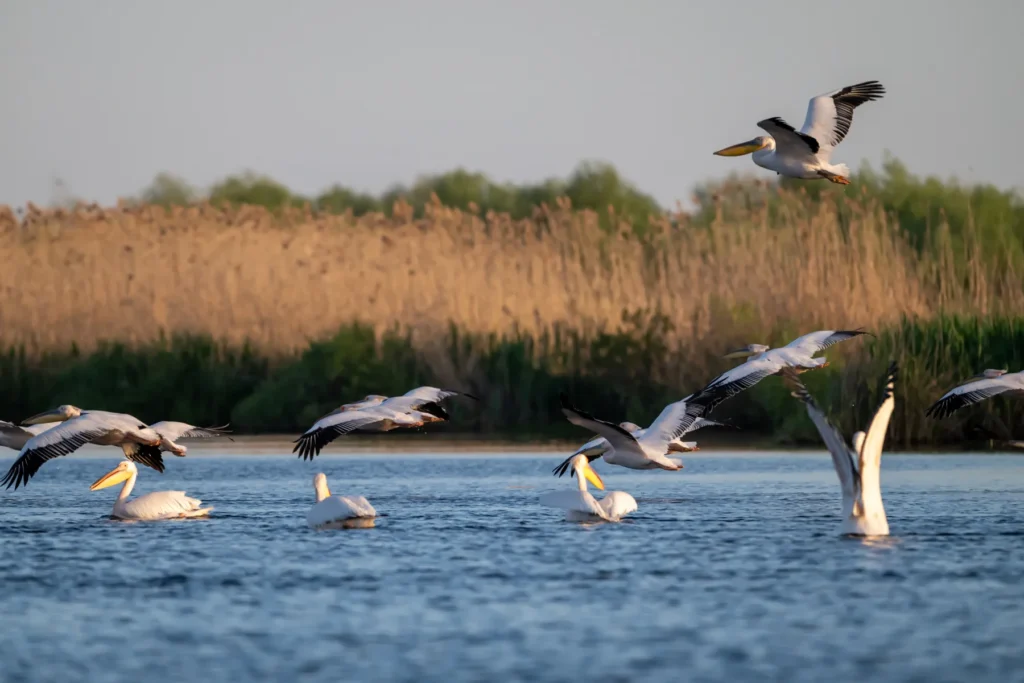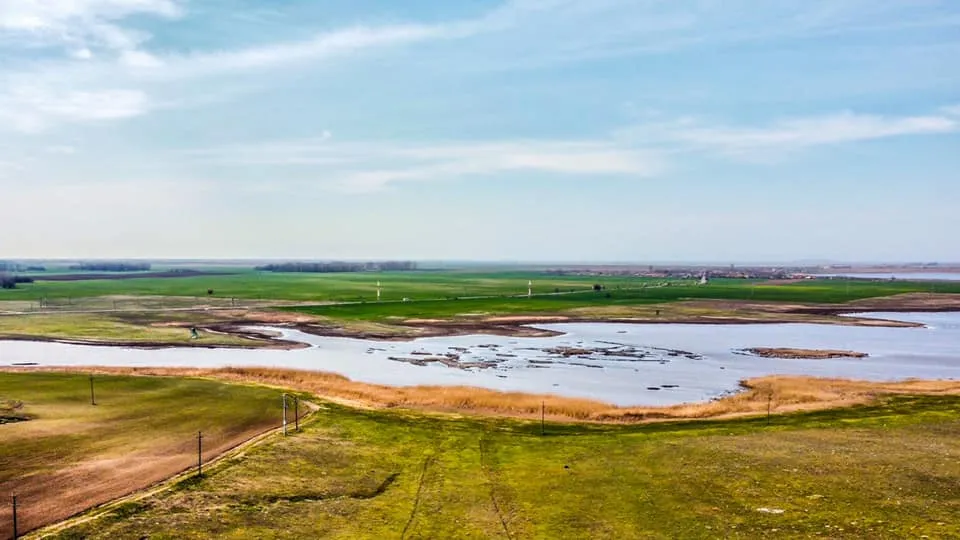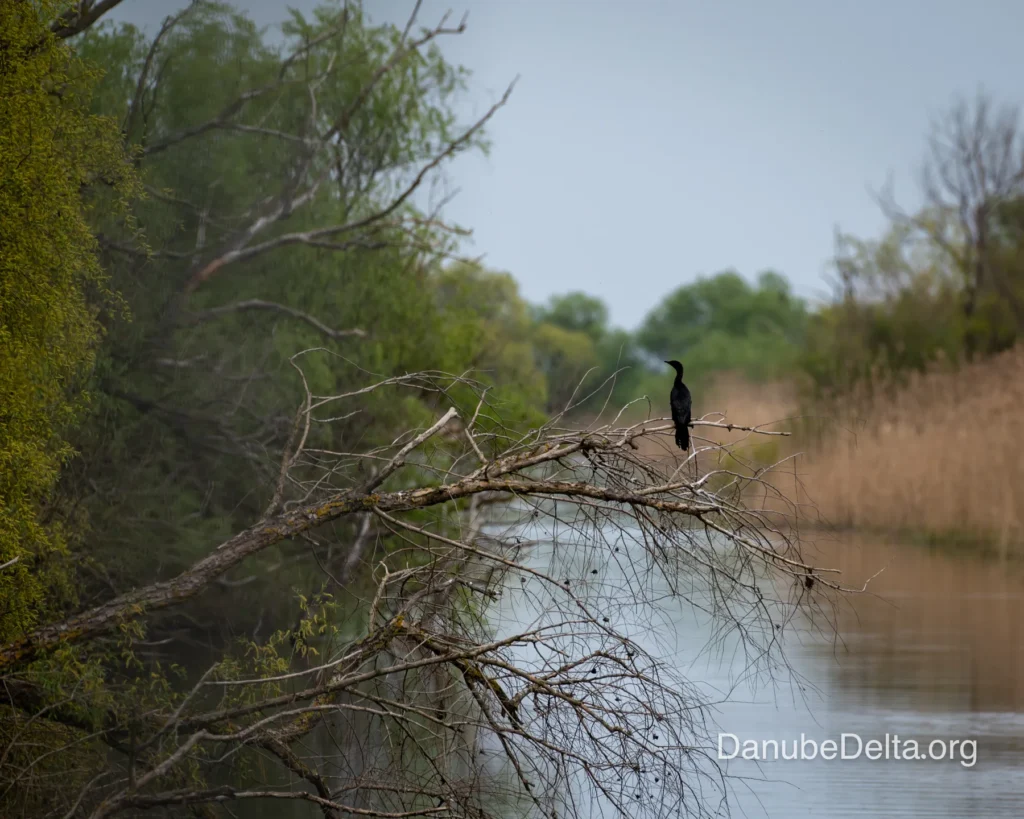Grindul and Lake Raducu, a strictly protected area in the Danube Delta
Grindul and Lake Raducu - Danube Delta
Oasis of biodiversity in the maritime delta
Grindul and Lake Răducu are a protected natural area of particular importance within the Danube Delta Biosphere Reserve (DDBBR). Situated in an area of contact between the fluvial and marine environments, these ecosystems provide a unique setting for studying the dynamics and fragility of the deltaic landscape. Although it is only one of 20 strictly protected areas in the RBDD, covering 2,500 hectares, Răducu is emblematic for the delicate balance between landforms, flora and fauna.
Legal and Administrative Framework of the Reserve
Legal and historical status
Grindul and Lake Răducu has been declared a protected area of national interest, corresponding to category I Ia IUCN (International Union for Conservation of Nature), which defines strictly protected nature reserves. It is a mixed nature reserve, protecting both flora and fauna and the landscape itself. It was officially established in 1991 and its status has been recognised and consolidated by national legislation, in particular by Law No. 5 of 6 March 2000, published in the Official Journal of Romania. According to these regulations, human activities are strictly forbidden in the integral protection zones, with the exception of research and surveillance.
Role of the Administration of the Danube Delta Biosphere Reserve (ARBDD)
The Administration of the Danube Delta Biosphere Reserve (ARBDD) is the public institution responsible for the management, restoration and protection of the natural heritage of the entire reserve. Its activity is based on the provisions of Law 82/1993, the legislation in force and international conventions, with the main objectives of conserving the existing natural heritage, promoting the sustainable use of resources and the ecological reconstruction of degraded areas. The ARBDD plays a crucial role in establishing and enforcing access regulations and sanctioning violations such as illegal fishing or camping in unauthorised areas. It is also responsible for issuing the necessary permits for access to the general perimeter of the RBDD.
| Feature | Details |
| Legal status | Strict nature reserve (Category Ia IUCN) of mixed type |
| Total surface area | 2.500 ha |
| Establishing normative act | Law No 5 of 6 March 2000 (declared), established in 1991 |
| Localisation | Tulcea county, Commune C.A. Rosetti (north-east of the Danube Delta) |
| Main features | Freshwater lakes (Răducu, Răduculeț), marine sandy soils |
Geographical and Ecosystem Characteristics
The reserve is located in the north-eastern part of Tulcea county, on the territory of C.A. Rosetti commune. It is situated in the central part of the maritime delta and south of the Letea sandstone. Its boundaries are defined by distinct natural and hydrological features: south of the Old Danube from the Magearu Channel to the Hudac Grind, west of the Hudac Grind, north of the temporary gorge between the Răducului and Parului Grind, and east of the Magearu Channel.
The area is a classic example of a river delta with marine influences. Here you can find freshwater lakes such as Ghiolurile Răducu and Răduculeț, which are fed by the last arm of the Danube's great 'M'. These aquatic basins are surrounded by marine sandstones with sandy, poor and mobile soils. This combination of freshwater and brackish (psamophilic, sand-adapted) environment creates a unique and fragile ecosystem. The hydrology of the area is adapted to the high amplitudes of the storm surges, an essential aspect that contributes to ecological stability. The isolation of the lake basins plays a fundamental role in maintaining this balance and protecting the fish fauna from external factors. Therefore, any hydro-technical modification in the region could seriously disturb this balance, affecting species adapted to very specific conditions.
The Exceptional Biodiversity of Grind and Lake Raducu
Flora
The vegetation of Grindul and Lake Raducu is characteristic of sandy and wet areas. A specialised psamophilous flora develops on the sandstones with their poor and often mobile soils. Representative species include:
- Pipirigul (Juncus gerardii)
- The marsh melon (with species of Euphorbia palustris and Euphorbia seguieriana)
- The donut (Carex ligerica)
- Pirul de mare (Elymus sabulosus)
In addition, in other areas of the delta, the plant landscape is complemented by climbing plants and rare species, such as sand volvulus and sand bramble, which are found in the adjacent Letea Forest.
Fauna
The reserve's fauna is equally remarkable and adapted to local conditions.
- Ichthyofauna: Răducu and Răduculeț Gorges are essential for fish fauna. Their natural isolation provides optimal conditions for the reproduction and rearing of fish specific to small lakes. These lakes act as a natural 'reservoir', protecting freshwater fish species that may be vulnerable elsewhere in the Delta. Species identified here include carp, catfish, walleye, pike, pike-perch, perch and linnet. This fish sanctuary function contributes directly to the maintenance of healthy fish populations and thus to the ecological stability of the entire region.
- Avifauna: The reserve is an important place for birds. It provides good nesting conditions for ducks, geese and swans (anatidae) and feeding sites for shorebirds (WIC) in the summer months. Of particular importance is the nesting of the endangered whooping crane, which has been reported in the reedbeds around the lake. The presence of such species with a precarious conservation status emphasises the international value of the area and fully justifies its strict protection regime, contributing to global conservation efforts.
- Other species: The documents consulted also indicate the presence of a diversity of mammals (fox, wild boar, otter) and an impressive number of invertebrate species, including about 1600 species of entomofauna, in the general context of the Letea Grind, adjacent to Răducu.
Pressures, Threats and Conservation Measures
The fragile ecosystem of the Grind and Lake Raducu faces a number of threats, both man-made and natural.
- Anthropogenic threats:
- Illegal fishing: Although recreational fishing is banned in strictly protected areas, poaching remains a persistent problem in the Danube Delta, with a direct impact on fish fauna.
- Uncontrolled tourism: The documents point to pressures from unprofessional tourism, which can lead to disturbance of wildlife, particularly during nesting periods. The presence of motorboats in the vicinity can generate noise pollution, disturbing the tranquillity needed by birds.
- Vegetation fires: Reed fires, often caused by humans, are a major threat that can destroy species' nesting and shelter habitats.
- Conservation measures:
- A total ban on access to the reserve, except for authorised research and surveillance personnel, is the main protection measure. This restriction is considered the most effective way to prevent environmental destruction and species disturbance.
- The absence of a conservation project dedicated exclusively to the Răducu area in the analysed documents suggests that the integral protection regime is in itself a sufficient management measure for this area, which indirectly benefits from the wider RBDD management projects.
Access and Visiting Regime for Responsible Ecotourism
Tourist access to the Grindul and Lake Raducu area is strictly regulated. The general public is not allowed to enter the actual perimeter of the reserve in order to ensure the unspoilt conservation of the ecosystem. Visitors can explore the reserve's outer perimeter and adjacent canals, where they can observe the landscape and wildlife from a distance without disturbing the species.
In order to visit the Danube Delta Biosphere Reserve, tourists need access permits, which can be obtained online or at the ARBDD information centres. Access fees vary according to the duration (1 day, 7 days, 1 year) and certain categories of people (pupils, students, pensioners, Delta residents) are free of charge.
It is essential that visitors respect certain rules of behaviour, such as:
- Slow navigation without loud noises, especially near nesting areas.
- A ban on littering and the obligation to collect and take it back.
- No camping on unauthorised sites.
Fishing in strictly protected areas, including the Răducu, is prohibited all year round and failure to comply with this rule can result in sanctions. By following these rules, holidaymakers can help preserve the unique natural heritage of the Danube Delta.
Conclusions and Recommendations
Grindul and Lake Răducu, with its strict nature reserve status, is a vital component of the Danube Delta UNESCO World Heritage. Its geographical features, with isolated freshwater lakes on sandy sandstones, create a sanctuary-habitat for remarkable biodiversity. This area serves as a crucial "gene pool" for ichthyofauna and an irreplaceable nesting site for threatened bird species.
To ensure long-term conservation, it is essential that management efforts focus on rigorous enforcement of the integral protection regime and public education. The recommendations for a webpage dedicated to this area should strongly emphasise the following aspects:
- Clarifying access rules: The distinction between visiting the adjacent canals and not entering the reserve will be clearly emphasised.
- Promoting responsible ecotourism: Practical advice will be given to visitors, encouraging them to adopt environmentally-friendly behaviour.
- Educational valorisation: The scientific value of the area will be emphasised, explaining its role as a refuge for rare species and its importance in the context of delta ecology.
- Using visuals: The inclusion of maps, photographs and illustrations of flora and fauna species will enhance public understanding and appreciation of this unique area.
Events in the Danube Delta
Accommodation to suit all tastes:
Whether you prefer the cosiness of modern villas, the rustic atmosphere of traditional guesthouses or the adventure of camping, they offer a variety of accommodation options to suit your needs and budget.
